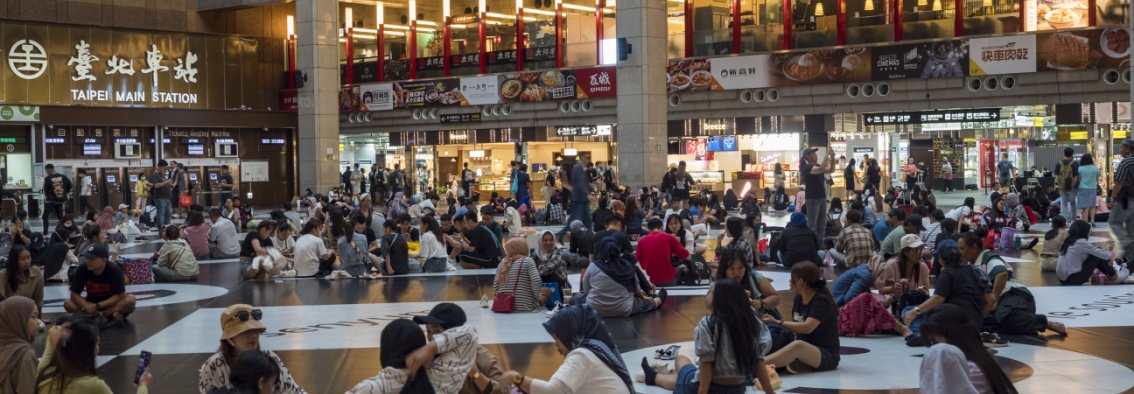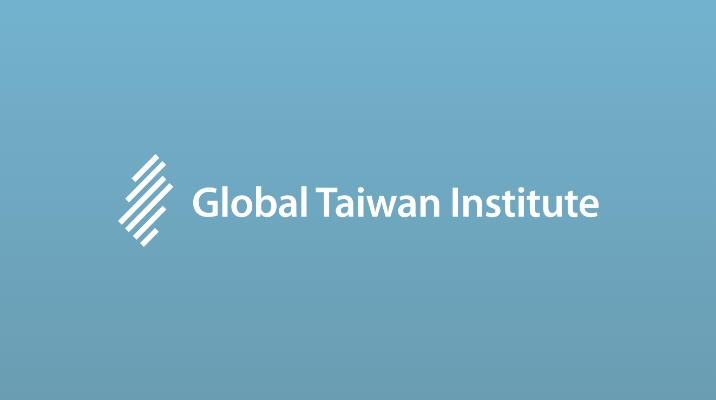Introduction
Over the past few decades, Taiwan has quietly evolved into a multicultural society—home to more than half a million foreign spouses, the overwhelming majority of whom are women from Southeast Asia. By 2022, nearly 91 percent of all foreign spouses were female, with significant numbers arriving from Vietnam, Indonesia, Thailand, and the Philippines. [1] Such women, often labeled as “foreign brides,” play a central role in sustaining Taiwan’s care economy and demographic future—raising children, supporting aging in-laws, and bridging cultural worlds. Yet, while they are indispensable to Taiwanese households and society at large, these women are often rendered invisible, and their perspectives are frequently misunderstood, unheard, and overlooked.
At the heart of their marginalization lies a crucial challenge: limited fluency in Mandarin. For many of these women, this is not just a communication gap, it is also a deep-rooted barrier that shapes their access to healthcare, employment, education, and community life. Their lack of fluency reinforces social isolation, invites discrimination, and leaves them vulnerable within both public and private spheres.
These linguistic challenges do not exist in a vacuum. For over three decades, Southeast Asian marriage migrants have been stigmatized as “undesirable others” from “undeveloped countries” and reduced to tropes of passive victims, gold-diggers, or runaways. [2] Taiwanese public discourse often expects these migrants to embody the ideal of the “traditional, chaste, virtuous woman,” tasked with prioritizing their husband’s family and assimilating quietly. [3] Those who fall short—due to language, education, or cultural unfamiliarity—are further marginalized as “unfit mothers” who are incapable of raising the so-called “new second generation” (新二代) of Taiwan. [4] These damaging narratives compound migrants’ feelings of inferiority and disenfranchisement, silencing their agency and reinforcing their outsider status.
Despite recent government initiatives and grassroots support, language remains one of the most deeply entrenched—and yet most addressable—barriers to social inclusion. It continues to cast many Southeast Asian marriage migrants as perpetual outsiders, estranged even within their own homes and communities.
Employment Barriers
While approximately 74 percent of new immigrant spouses in Taiwan are employed—according to data from the Ministry of Labor—language proficiency remains a critical determinant of job quality, stability, and mobility. For many Southeast Asian marriage migrants, limited fluency in Mandarin or Taiwanese acts as a barrier to better employment opportunities. In a recent national survey, “foreign country” spouses (mostly Southeast Asians and others) were much more likely than mainland Chinese spouses to report problems in Chinese literacy and communication while on the job. About one in four new immigrant workers said they faced job‐related difficulties; among women the top concerns were low pay, juggling family and work, and especially weak Chinese reading/writing skills.
This language gap often relegates migrant women to informal or low-skilled sectors such as domestic caregiving, factory work, or hospitality—fields where linguistic competence is essential for safety and communication yet seldom supported through structured language training. Even with Taiwan’s New Southbound Policy (NSP, 新南向政策) aiming to boost economic and people-to-people exchanges between Taiwan and countries in Southeast Asia, the NSP has failed to address labor issues, and many Taiwanese employers do not hire non‐Chinese speakers beyond menial tasks. Mandarin proficiency is frequently treated as a baseline requirement for employment, and hiring decisions often depend on social referrals rather than formal channels. As one Indonesian resident explained bluntly, “Almost all jobs in Taiwan require at least understanding Chinese.” One study found that many employers explicitly associate Southeast Asian migrants with low-skill labor and express concerns over their communication abilities—even when candidates have prior experience or relevant education. This dynamic reinforces a pattern of “double exclusion,” where migrants are disadvantaged both structurally—through the lack of accessible language training, adequate formal job matching services, and inclusive labor policies—and through employer bias. [5]
Without adequate language proficiency, many migrant women remain trapped in a cycle of constrained opportunity—ultimately reinforcing stereotypes about their educational backgrounds and capabilities and perpetuating a broader pattern of economic precarity and social marginalization.
Healthcare Access and Utilization
In addition to limiting employment opportunities, language barriers are also a critical obstacle preventing Southeast Asian marriage migrants in Taiwan from accessing timely and effective healthcare. Most of these women, lacking basic language and literacy skills, struggle with low health literacy, making it difficult to understand medical information or navigate the healthcare system. In practice, this often results in missed preventive care, misunderstanding of diagnoses or treatment plans, and harmful outcomes. According to one 2019 survey, 17.1 percent of marital migrants cited language barriers when visiting doctors, frequently leading to miscommunication, incorrect treatments, or delayed care. One woman mistakenly fed her child the wrong formula due to instructions written only in Chinese; another was unable to convey a serious medication allergy, placing her in immediate danger. [6] In the absence of professional interpretation, many women rely on spouses, children, or informal helpers to communicate—raising significant risks to patient safety and autonomy.
These real-world consequences underscore the urgent need for a more systematic and equitable approach to language access in healthcare. A 2019 study found that 60 percent of migrant respondents wanted an in-person interpreter, while 51 percent requested medical documents in their native language. One Vietnamese interviewee reflected, “I couldn’t understand anything… medical information was beyond reach until a health center translator helped.”
Taiwan has taken steps to improve healthcare access for migrants under the Ministry of Health and Welfare’s 2016 “Multi-language Translation for Healthcare Service Initiative.” Measures include an online platform to match volunteer interpreters, pilot instant interpretation services, and the translation of 225 medical forms into 20 languages. Migrant-friendly clinics have also been piloted at Taipei Veterans General Hospital (north), Changhua Christian Hospital (central/west), Hualien Tzu Chi Hospital (east), and Kaohsiung Medical University Hospital (south). However, a 2020 study found that these initiatives remain fragmented, highlighting significant gaps in the availability of professional medical interpreters, the lack of a legal framework to protect medical interpreting, and insufficient dissemination of information about national healthcare resources to support migrants in Taiwan. [7]
Without treating language access as essential healthcare infrastructure—rather than an optional support—Taiwan will continue to underserve one of its most vulnerable populations.
Social Acceptance and Discrimination
Beyond services, language differences influence how society treats foreign spouses. As a result, public attitudes in Taiwan remain ambivalent. Surveys of expatriates praise Taiwanese friendliness, but many local citizens are still unaccustomed to non‐Chinese speakers. Even the common term “foreign bride” betrays bias: it implies pervasive xenophobia and discrimination against married immigrant women, casting them as outsiders and subordinates. Language aptitude—or lack thereof—often reinforces stereotypes. For instance, Indonesian brides who can speak the Hakka dialect are seen more favorably and have fewer issues communicating, while those who only speak their native tongue are often marginalized. [8]
These linguistic deficits also create dependency and power imbalances within families. Many new immigrant women rely heavily on their husbands or in-laws to navigate daily life. This dynamic can reinforce the stereotype of the “submissive foreign wife,” limiting their autonomy and increasing their vulnerability—especially in abusive households. Linguistic isolation is a known factor in preventing women from reporting domestic violence or accessing help, leaving many trapped in silence.
Outside the home, social and familial exclusion is common. A 2025 feature by the Taiwanese National Immigration Agency (NIA, 內政部移民署) lists “lack of social support networks” and strained family relationships—particularly difficulties with spouses and in-laws, including frequent conflicts with mothers-in-law—as key integration challenges faced by new immigrant women from Southeast Asia in Taiwan. Migrant women who speak “broken” Mandarin often find themselves ignored by colleagues or neighbors. Some face outright discrimination at work: long-time workers reported that such women often earned lower pay for the same work compared to their counterparts—i.e. local Taiwanese women—or were passed over for promotions by colleagues due to perceived language deficiencies.
Within the household, language barriers are also closely linked to stigma and interpersonal strain. Research shows that miscommunication with in-laws, especially mothers-in-law, frequently provokes conflict and emotional distress for such women in Taiwan. [9] One illustrative case involved a Vietnamese woman who could not understand her mother-in-law’s mixture of Mandarin and Hoklo, prompting the mother-in-law to call a government-supported hotline for translation assistance in order to communicate how to feed the baby properly. This reliance on third-party intervention underscores how limited language proficiency can disrupt even basic caregiving routines and familial trust. They also often feel disrespected or misunderstood, reinforcing their perception as outsiders in both familial and societal contexts. [10] Such linguistic exclusion compounds social stigma and isolates migrant women from broader community life and women often remain at home, unable to join local groups or events without language support.
Still, many foreign brides are eager to integrate. One survey notes that “many new immigrant women are eager to learn the language and understand local culture” in hopes of gaining respect and social acceptance. Yet, even these efforts are often met with limited institutional support—such as insufficient access to affordable and flexible language classes, lack of culturally sensitive social services, inadequate outreach programs, and minimal governmental or community resources to assist with their social integration—and public ambivalence. In this context, language barriers do more than isolate, they contribute to a wider system of structural and symbolic exclusion that keeps women on the margins of both family and society.
Grassroots Efforts and Policy Recommendations
In Taiwan, grassroots movements have proven essential in addressing the language-related marginalization of Southeast Asian marriage migrants—especially where state efforts fall short. The TransAsia Sisters Association, Taiwan (TASAT), founded in 2003, is a standout example. Originally launched to provide literacy classes to immigrant brides, TASAT has evolved into a dynamic advocacy force led by and for migrant women. It operates multilingual hotlines, peer-staffed workshops, and creative platforms like the TASAT Troupe, which uses theater to expose the lived consequences of linguistic and social exclusion.
Similarly, the Alliance for Human Rights Legislation for Immigrants and Migrants (AHRLIM)—founded by Taiwanese researcher and activist Hsia Hsiao-chuan (夏曉鵑)—has played a pivotal role in shaping national policy. Through large-scale grassroots mobilization, AHRLIM successfully pushed for major amendments to Taiwan’s Immigration Act (2007) and the Statute Governing Relations with Mainland China (2009), amplifying the voices of immigrant communities and strengthening legal protections for foreign spouses. [11]
Migrant women have been central to these movements, demonstrating that language barriers are not simply personal challenges—they are deeply political issues tied to legal status, access to citizenship, and public recognition. Yet, while grassroots efforts like TASAT and AHRLIM have made significant gains, they cannot shoulder this burden alone. These community-based responses must be reinforced by state-led, structural interventions that address the root causes of exclusion and remove linguistic barriers across all sectors—employment, healthcare, and other social services.
Based on my research, I propose the following targeted policy recommendations:
- Expand language education: The government should subsidize Mandarin and Taiwanese language courses for immigrant spouses, both pre-arrival and post-arrival, through municipal service centers and trusted community organizations such as TASAT. These programs should offer flexible scheduling and provide on-site childcare to accommodate caregiving responsibilities, employ bilingual instructors and peer mentors to enhance accessibility, and be formally linked to residency and naturalization pathways, providing supportive—not punitive—language proficiency benchmarks.
- Ensure Interpretation in Public Services: Public hospitals and clinics should mandate the use of professional interpreters to ensure effective communication. Services should be offered in major migrant languages such as Vietnamese, Indonesian, Tagalog, and Thai. Additionally, key forms, prescriptions, and educational materials must be translated into these languages. To further support diverse communities, multilingual assistance should also be expanded in schools and social welfare offices.
- Enhance community outreach. Municipal integration centers should be established by local governments in partnership with the NIA under the Ministry of the Interior, and supported by trusted community organizations like TASAT. They should be financially supported by the NIA and staffed by local governments to offer valuable services such as peer-led language cafés and civic education programs. These centers can also provide parenting support and raise awareness of rights among immigrant families. To reach isolated or rural women, home visits should be conducted, ensuring that support is accessible to all members of the community.
- Strengthen Parental Engagement: Schools should be equipped to engage immigrant mothers in meaningful ways by hiring bilingual parent liaisons who can bridge language and cultural gaps. Interpreted school events and translated materials should be provided to ensure accessibility for all families. Additionally, involving immigrant mothers as classroom assistants and cultural ambassadors can foster a more inclusive and supportive educational environment.
By treating language support as foundational, Taiwan can turn diversity into strength. In the words of one official, foreign spouses and their children “are a new generation of Taiwanese” who are worth the government’s attention. Reducing linguistic barriers will help these families fully participate in society—from the marketplace to the hospitals—and will not only improve the lives of these women but also build a more inclusive, cohesive Taiwanese society.
The main point: Limited proficiency in Mandarin lies at the core of the challenges faced by Southeast Asian marriage migrants in Taiwan. It underpins their struggles with employment discrimination, healthcare access, and social exclusion, reinforcing their marginalization within families and society. To break this cycle, Taiwan must invest in accessible language education, mandate professional interpretation in public services, and expand community outreach programs. Only by doing so can Taiwan ensure the full participation of these women, and build a truly inclusive society.
This research was supported by the Taiwan Education and Research Program (TERP) Fellowship at the Sigur Center for Asian Studies, George Washington University.
[1] Ministry of the Interior, Immigration Agency, ROC, “Number of Foreign Spouses and Mainland (Including Hong Kong and Macao) Spouses,” Data.gov.tw, https://data.gov.tw/en/datasets/13503.
[2] Danièle Bélanger, Hye-Kyung Lee, and Hong-Zen Wang, “Ethnic Diversity and Statistics in East Asia: ‘Foreign Brides’ Surveys in Taiwan and South Korea,” Ethnic and Racial Studies 33, no. 6 (2010): 1108.
[3] Hong-Zen Wang and Danièle Bélanger, “Taiwanizing Female Immigrant Spouses and Materializing Differential Citizenship,” Citizenship Studies 12, no. 1 (2008): 91.
[4] Pei-Chia Lan, “From Reproductive Assimilation to Neoliberal Multiculturalism: Framing and Regulating Immigrant Mothers and Children in Taiwan,” Journal of Intercultural Studies 40, no. 3 (2019): 318.
[5] Hae Na Kim, Yun Hsiang Hsu, Chih-Yu Chen, and Kuo-Jung Lin, “How Are Migrants Viewed in the Eyes of Employers? Double Exclusion among Immigrants in Taiwan,” Omnes 10, no. 2 (2020): 121–23.
[6] Feng-Yuan Chu et al., “Factors Associated with Access of Marital Migrants and Migrant Workers to Healthcare in Taiwan: A Questionnaire Survey with Quantitative Analysis,” International Journal of Environmental Research and Public Health 16, no. 16 (August 8, 2019): 2830.
[7] Kuan, Ai Seon, Tzeng-Ji Chen, and Wui-Chiang Lee. “Barriers to Health Care Services in Migrants and Potential Strategies to Improve Accessibility: A Qualitative Analysis.” Journal of the Chinese Medical Association 83, no. 1 (January 2020): 95–101.
[8] Chih-jou Jay Chen and Te-lin Yu, “Public Attitudes toward Taiwan’s Immigration Policies,” Taiwanese Sociology, no. 10 (December 2005): 95–148.
[9] Ibid.
[10] Shu, Bih-Ching, For-Wey Lung, and Ching-Hsing Chen. “Mental Health of Female Foreign Spouses in Transnational Marriages in Southern Taiwan.” BMC Psychiatry 11, no. 1 (2011): 4. https://doi.org/10.1186/1471-244X-11-4
[11] Lu, Melody Chia-Wen, and Wei-Jun Jean Yeung. “The Rise in Cross-National Marriages and the Emergent Inequalities in East and Southeast Asia.” Sociology Compass 18, no. 5 (2024): 8–9. https://doi.org/10.1111/soc4.13219.
[12] Hsiao-Chuan Hsia, “Foreign Brides, Multiple Citizenship and the Immigrant Movement in Taiwan,” Asian and Pacific Migration Journal 18, no. 1 (2009): 17–46.




